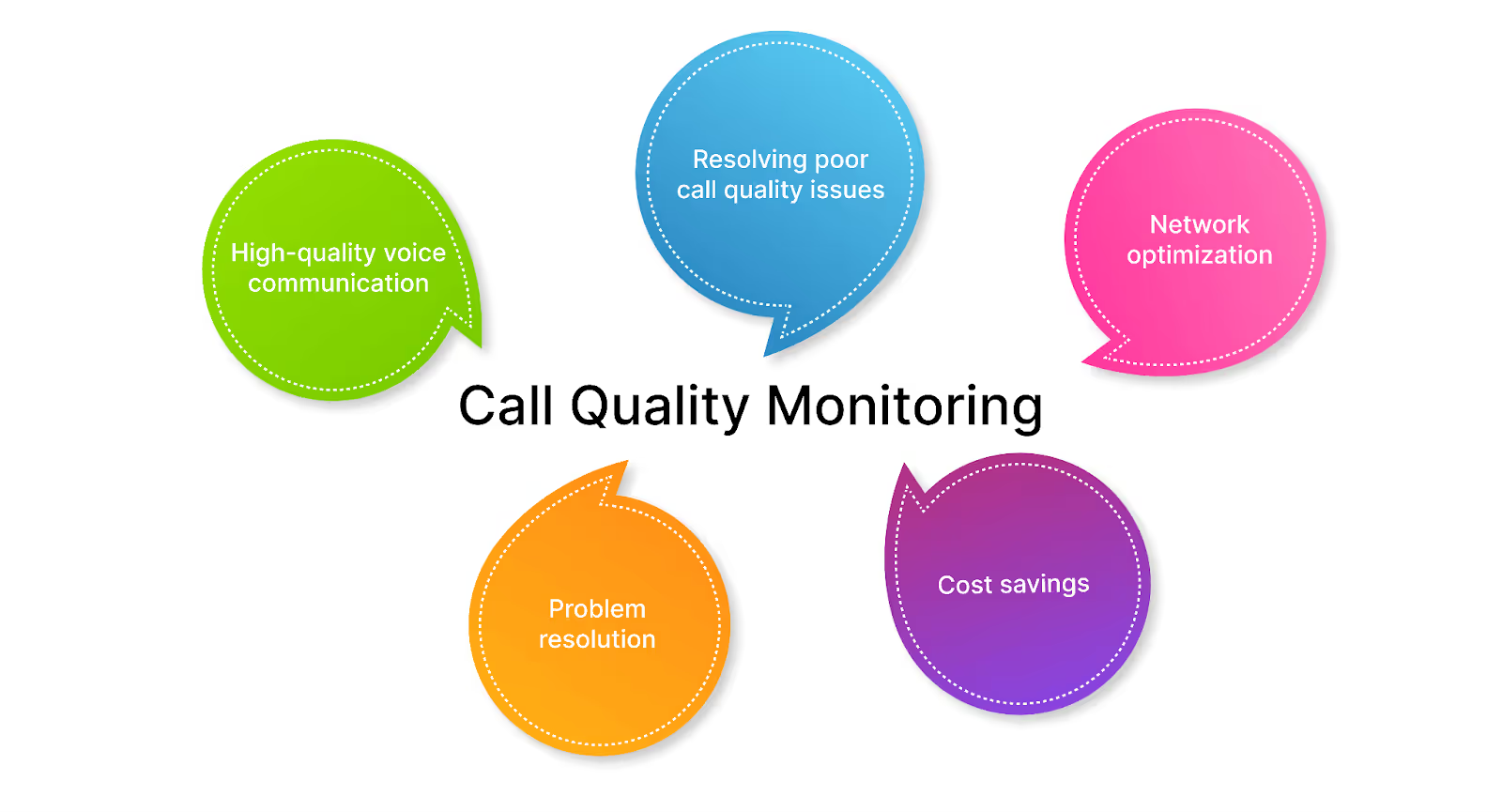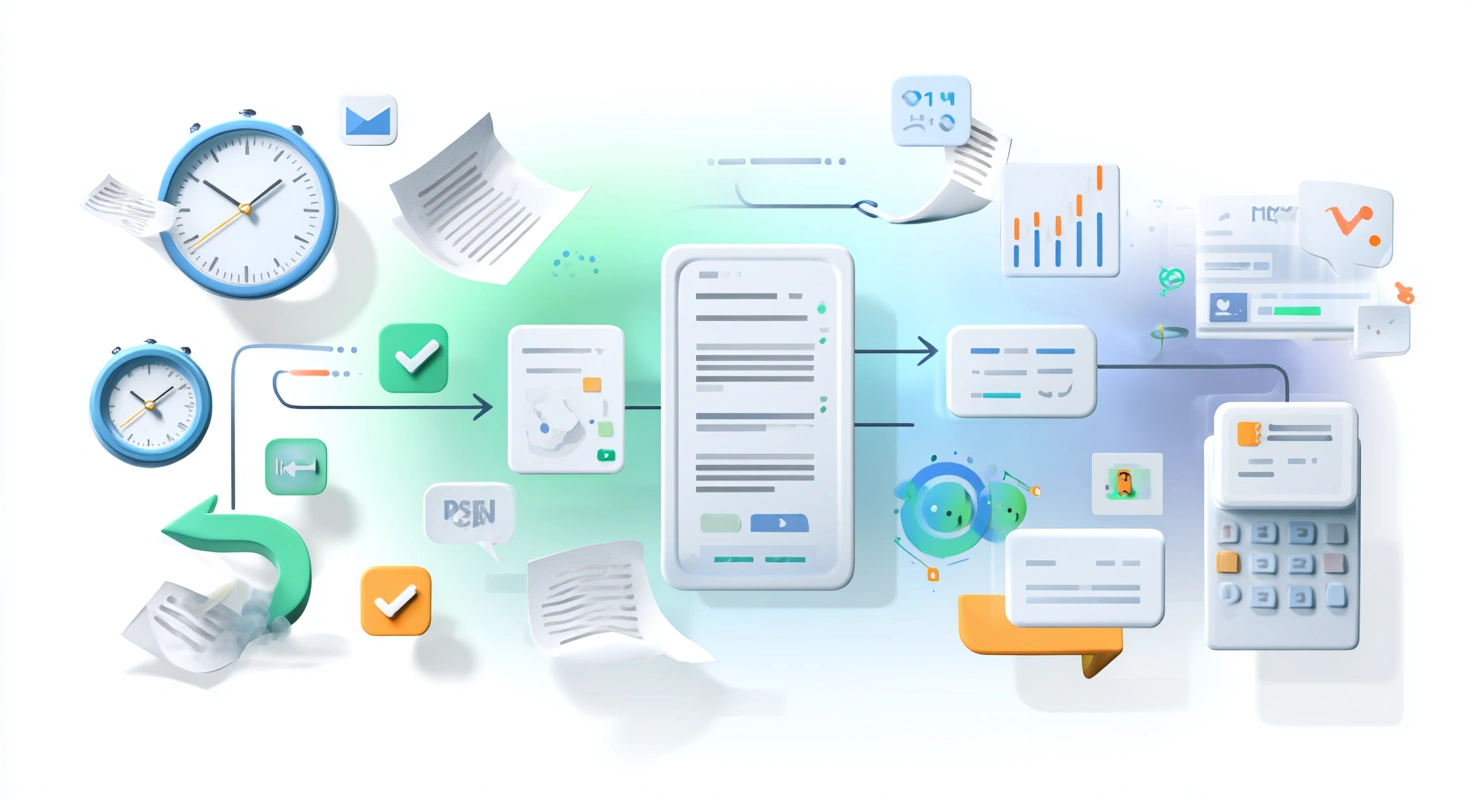As 2024 approaches, the call center industry will still be undergoing rapid change due to both shifting consumer demands and technological breakthroughs. Agent analytics plays a more important role in this context than before. By redefining the industry, contact centers that invest in powerful agent analytics tools are doing more than just staying ahead of the curve.
This blog post explains why agent analytics will be essential in 2024 and lists the most important metrics that contact centers should be concentrating on.
Improve Performance Metrics through Call Center Excellence in Agent Analytics
The Necessity of Agent Analytics in Modern Call Centers
Agent analytics is crucial in modern call centers, providing insights into agent performance, customer interactions, and operational efficiency, enabling optimization of workflows and service quality.
1. Enhanced Performance and Efficiency
Agent analytics review provides invaluable insights into agent performance, helping call centers to identify areas of strength and opportunities for improvement. By leveraging data from agent analytics tools, managers can make informed decisions to enhance overall efficiency and effectiveness.
2. Improved Customer Experience
Conversation analytics software goes beyond traditional metrics, offering a deeper understanding of customer interactions. This insight is pivotal in tailoring customer experiences and ensuring that agents meet and exceed customer expectations.
3. Strategic Decision Making
Data-driven decisions are the cornerstone of modern business strategies. An agent analytics dashboard offers a comprehensive view of various performance metrics, enabling managers to make strategic decisions based on real-time data.

Top Metrics to Monitor in Agent Analytics
1. First Call Resolution (FCR)
FCR measures the effectiveness of agents in resolving customer queries in the first interaction. High FCR rates are indicative of efficient service and contribute to higher customer satisfaction.

2. Average Handle Time (AHT)
This metric provides insights into the average duration an agent spends on a call. While a lower AHT is often desired, it's crucial to balance efficiency with quality of service.

3. Customer Satisfaction (CSAT) Scores
Direct feedback from customers post-interaction offers a clear picture of their satisfaction levels. CSAT scores are a direct reflection of an agent’s ability to meet customer needs.

4. Agent Occupancy Rate
This metric indicates the percentage of time agents spend handling calls versus waiting for calls. Optimal occupancy rates ensure agents are utilized effectively without being overburdened.

5. Service Level and Response Times
Service level measures the percentage of calls answered within a predetermined timeframe. This metric is crucial for assessing the responsiveness of your call center.

6. Call Quality Scores
Evaluating the quality of calls based on predefined criteria ensures that agents adhere to the desired service standards.
7. Conversion Rates
For sales-oriented call centers, tracking conversion rates is essential to gauge the effectiveness of agents in turning interactions into sales.
This blog is just the start.
Unlock the power of Convin’s AI with a live demo.

The Types of Call Center Analytics
Call center analytics have become increasingly sophisticated, offering a range of insights to optimize operations and enhance the customer experience. Here are the primary types of call center analytics:
- Performance Analytics: Focuses on measuring and analyzing the performance of individual agents and the call center as a whole. Key metrics include Average Handle Time (AHT), First Call Resolution (FCR), Call Volume, Service Level, and Agent Occupancy rates.
- Quality Analytics: Involves assessing the quality of customer interactions. This can include monitoring and evaluating call recordings for compliance, communication skills, and adherence to protocols.
- Predictive Analytics: Uses historical data to predict future call volumes, customer behavior, and trends. This type of analytics helps in workforce planning and anticipating customer needs.
- Customer Analytics: Focuses on understanding customer behaviors, preferences, and satisfaction levels. Metrics such as Customer Satisfaction Scores (CSAT), Net Promoter Score (NPS), and Customer Effort Score (CES) are commonly used.

- Speech Analytics: Involves analyzing recorded calls to extract useful information. Speech analytics can identify common customer complaints, reasons for calls, and overall customer sentiment.

- Text Analytics: Similar to speech analytics, it focuses on written communication channels like email, chat, and social media. It helps in understanding customer sentiment, identifying common issues, and gauging overall service quality.
- Desktop Analytics: Monitors and analyzes how agents interact with their desktop applications during customer interactions. This can help identify workflow inefficiencies and training opportunities.
- Self-Service Analytics: Analyzes the effectiveness of self-service channels like IVR (Interactive Voice Response) and online FAQs. It helps in understanding how customers are using these channels and how they can be improved.
Each type of analytics provides unique insights that can help call centers improve their operations, enhance customer satisfaction, and make informed business decisions.
The Pros and Cons of Using Call Center Analytics
Call center analytics offer a wealth of insights into customer interactions and operational efficiency, but like any tool, they come with their own set of advantages and challenges.
Here's a look at the pros and cons:
Pros of Using Call Center Analytics
- Improved Customer Service: Analytics provide detailed insights into customer needs and preferences, enabling personalized service and improved customer satisfaction.
- Enhanced Agent Performance: Performance metrics help identify training needs and areas for improvement, leading to more efficient and effective agents.
- Operational Efficiency: By analyzing call patterns, call centers can optimize staffing and reduce wait times, enhancing overall efficiency.
- Data-Driven Decision Making: Analytics offer concrete data to base decisions on, from operational changes to strategic planning.
- Predictive Insights: Predictive analytics can forecast call volumes and trends, aiding in proactive resource planning and strategy development.
- Quality Control: Monitoring and analyzing calls ensures adherence to quality standards and compliance requirements.
Cons of Using Call Center Analytics
- Cost and Complexity: Implementing and maintaining sophisticated analytics software can be costly and complex, requiring significant investment in technology and training.
- Data Overload: The sheer volume of data generated can be overwhelming, making it challenging to extract actionable insights without proper tools and expertise.
- Privacy Concerns: Recording and analyzing calls raises privacy concerns, requiring strict adherence to data protection laws and customer consent.
- Dependence on Technology: Over-reliance on analytics tools can lead to a lack of human judgment in decision-making processes.
- Potential for Misinterpretation: Data can sometimes be misinterpreted, leading to incorrect conclusions and strategies.
- Resistance to Change: Implementing new systems and processes can meet resistance from staff, especially if they feel their performance is being too closely scrutinized.
Call center analytics can enhance operations efficiency, but careful implementation requires considering both technological and human aspects, balancing insights with human judgment and interaction.
How Does Call Center Analytics Impact Customer Experience?
Call center analytics significantly impact the customer experience in several ways, transforming how call centers interact with and serve their customers. Here’s how analytics can shape and enhance the customer experience:
- Personalized Customer Interactions: Analytics provide deep insights into customer preferences and history. This information allows agents to tailor their interactions, making customers feel understood and valued.
- Improved Response Times: By analyzing call volumes and patterns, call centers can optimize staffing schedules, reduce wait times, and improve response times, which are crucial factors in customer satisfaction.
- Enhanced Issue Resolution: Analytics helps identify common customer issues and queries. This knowledge enables call centers to develop more effective strategies and solutions, improving first-call resolution rates.
- Consistent Service Quality: Monitoring and analyzing calls ensures that all customer interactions meet the desired quality standards. Consistency in service quality is key to maintaining customer trust and loyalty.

- Proactive Customer Service: Predictive analytics can forecast customer needs and trends, allowing call centers to be proactive in addressing potential issues before they escalate, thereby enhancing the overall customer experience.
- Identifying Training Needs: Call center analytics can pinpoint areas where agents may need additional training or support, ensuring that they are well-equipped to handle customer interactions effectively.
- Feedback Loop: Analytics can track customer satisfaction through metrics like CSAT (Customer Satisfaction Score) and NPS (Net Promoter Score), providing a feedback loop to improve service continuously.
- Reducing Customer Effort: By understanding the customer journey and identifying pain points, call centers can streamline processes, making it easier for customers to get the help they need.
- Customized Offerings: Insights from analytics can inform the development of new products or services tailored to customer needs and preferences, enhancing customer satisfaction and loyalty.
In summary, call center analytics play a pivotal role in understanding and enhancing the customer experience. By leveraging data-driven insights, call centers can not only meet but exceed customer expectations, fostering a positive, long-lasting relationship with their customer base.
Ready to harness the power of agent analytics? Explore Convin to discover the top metrics and start optimizing your operations today.
FAQs
1. What are the call center trends in 2024?
In 2024, call center trends will focus on AI and automation, omnichannel communication, remote and hybrid work models, advanced analytics, and employee experience, ensuring 24/7 service, personalized customer experiences, and agent satisfaction.
2. Why is call center analytics important?
Call center analytics to enhance customer experience, improve operational efficiency, identify training needs, predict trends, and monitor service quality through data-driven decision-making, resource optimization, and continuous performance tracking.
3. Which agent metric measures how well an agent is performing on calls?
Quality Score: This metric, often derived from call monitoring and evaluations, measures how well an agent adheres to the call center’s quality standards, including communication skills, adherence to protocols, and overall customer interaction effectiveness.
Other relevant metrics include FCR, CSAT, and NPS, which also reflect on individual agent performance.
4. What are the key performance indicators for call center agents?
Key Performance Indicators (KPIs) like First Call Resolution, Average Handle Time, Customer Satisfaction, and Call Quality Score are crucial for evaluating agent performance, operational efficiency, and customer service effectiveness in call centers.
5. What are the benefits of conversation analytics?
Conversation analytics enhances businesses by analyzing customer sentiments, agent performance, and operational strategies, resulting in improved customer experiences, operational efficiency, and informed decision-making.







.avif)